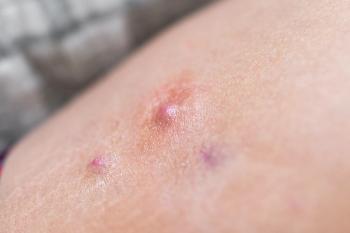
Sonye Danoff, M.D., Ph.D., Discusses the FIBRONEER Study for IPF
Key Takeaways
- Nerandomilast, approved by the FDA, is the first new IPF therapy in a decade, slowing lung function decline as a standalone and add-on treatment.
- The FIBRONEER trials showed nerandomilast's efficacy in reducing lung function decline, even when combined with existing therapies like pirfenidone or nintedanib.
The results of the FIBRONEER trial were the basis for the FDA approval of nerandomilast in October 2025.
Sonye Danoff, M.D., Ph.D., director of the Interstitial Lung Disease Program at Johns Hopkins University and senior medical advisor to the Pulmonary Fibrosis Foundation Care Center Network, sees a new era unfolding for patients with idiopathic pulmonary fibrosis (IPF).
She is talking about the recently FDA-approved drug nerandomilast, marketed under the name
Danoff was a site investigator at Johns Hopkins for the promising FIBRONEER study, spoke with Managed Healthcare Executive about the study and what she sees as promising in IPF in the immediate future.
What makes the results of the FIBRONEER study notable?
This is the first new therapy approved for idiopathic pulmonary fibrosis (IPF) in the last decade. Back in 2014, with the approval of pirfenidone [sold under the brand name Esbriet] and nintedanib [sold under the brand name Ofev], IPF went from being untreatable to a disease with available treatments. Those drugs have been important, but there’s still room for improvement. Having a new compound with positive clinical trial results is very exciting and recently the
Where is the research now?
The clinical trials for nerandomilast in IPF were completed about 18–24 months ago. The
What are the biggest challenges in treating IPF and other fibrotic lung diseases today?
IPF mainly affects older adults, especially men over 65 and, historically, has a relentless course, with life expectancy around three to five years after diagnosis. Although existing therapies slow the decline in lung function, they don’t stop it. The FIBRONEER trial showed that patients experienced a slower decline in lung function regardless of whether they were on background therapy, which is a meaningful step forward.
Are there other promising developments in the field that you are seeing?
Yes. There’s growing interest in inhaled therapeutics, which may allow higher local doses in the lungs with fewer systemic side effects. We’re also identifying new molecular targets, which could lead to combination therapies and, eventually, personalized approaches based on biomarkers—much like what has happened in cancer treatment.
Beyond medication, what advances are improving patient care?
Pulmonary rehab, decentralized and virtual care, symptom management, patient education and palliative care are all critical. Palliative care isn’t just end-of-life care—it helps manage symptoms like cough, shortness of breath, anxiety and depression, improving quality of life alongside medical therapy. Patient engagement and educational tools are also increasingly important.
How do you see research like this changing the standard of care in the future?
Nerandomilast provides patients with more options, either as a first therapy or as an add-on to existing antifibrotics. It appears to have a more tolerable side effect profile, which is important for patients who’ve struggled with other medications. Over the next few years, we’ll learn more about how best to use it and who benefits most, but this represents a meaningful advance in IPF care.
Newsletter
Get the latest industry news, event updates, and more from Managed healthcare Executive.





















































